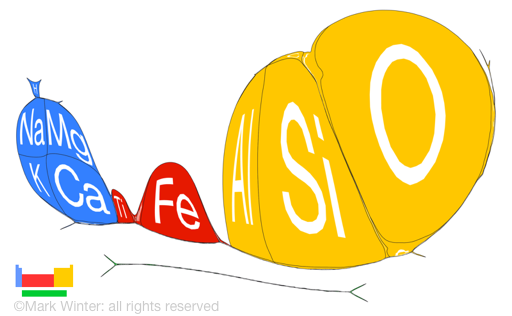Hydrogen - 1H: geological information
H2 gas is present in the earth's atmosphere in very small quantities, but is present to a far greater extent chemically bound as water (H2O) Water is a constituent of many minerals.
Hydrogen is the lightest element and is by far the most abundant element in the universe, making up about about 90% of the atoms or 75% of the mass, of the universe. Hydrogen is a major constituent of the the sun and most stars. The sun burns by a number of nuclear processes but mainly through the fusion of hydrogen nuclei into helium nuclei.
Hydrogen is a major component of the planet Jupiter. In the planet's interior the pressure is probably so great that solid molecular hydrogen is converted into solid metallic hydrogen.
Abundances of hydrogen in various environments
In this table of abundances, values are given in units of ppb (parts per billion; 1 billion = 109), both in terms of weight and in terms of numbers of atoms. Values for abundances are difficult to determine with certainty, so all values should be treated with some caution, especially so for the less common elements. Local concentrations of any element can vary from those given here an orders of magnitude or so and values in various literature sources for less common elements do seem to vary considerably.
| Location | ppb by weight | ppb by atoms |
|---|---|---|
| Universe | 750000000 | 930000000 |
| Sun | 750000000 | 930000000 |
| Meteorite (carbonaceous) | 24000000 | 170000000 |
| Crustal rocks | 1500000 | 31000000 |
| Sea water | 107800000 | 662000000 |
| Stream | 115000000 | 110000000 |
| Human | 100000000 | 620000000 |


The chart above shows the log of the abundance (on a parts per billion scale) of the elements by atom number in our sun. Notice the "sawtooth" effect where elements with even atomic numbers tend to be more strongly represented than those with odd atomic numbers. This shows up best using the "Bar chart" option on the chart.

